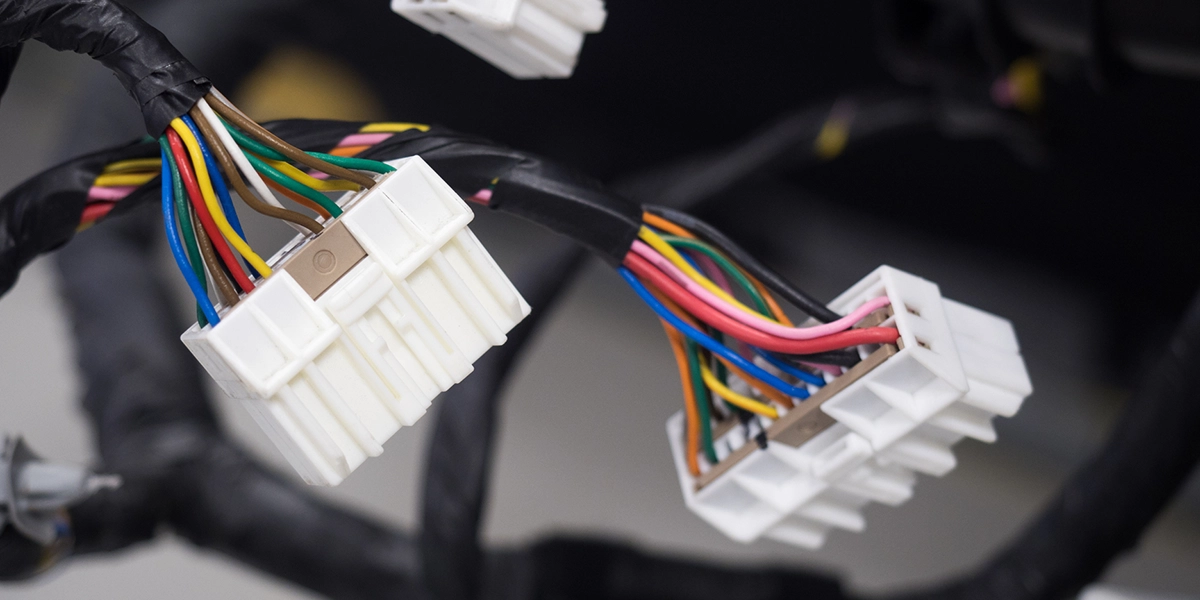Early warning diagnostics: it’s a familiar concept in the world of medicine, where tests and lab results help patients seek preventive treatment, resolving trouble before symptoms even arise.
It’s less of a thing in the world of automotive service, where good maintenance often depends on the ability to spot and interpret symptoms. Maybe you hear an unfamiliar click or a grinding noise. Maybe a technician spots a worn-out part while performing an unrelated repair. Or maybe your car stalls out on the side of the road. You sigh and shake your head. “I guess we have a problem.”
But a new system—Troubleshooter for the Connected Vehicle—promises to reshape the landscapes of ownership and repair by monitoring system operations in real-time and sending the customer in for service before outward symptoms arise.
In Part One of our interview, Ralph Pompea outlined this revolutionary new development in vehicle service and customer experience.
Now, in Part 2, Ralph explains how this system stands to improve daily life for customers and technicians, even as it creates new revenue streams for OEMs.
EARLY WARNING DIAGNOSTICS
For companies that do implement Troubleshooter in a connected vehicle, what would it look like from a technological standpoint?
Troubleshooter, until now, has been a technician tool. The technician sees an issue on a product, you know, they plug into the system, identify the issue, and then run through a prescribed, VIN-specific diagnosis for that issue.
This latest development places an instance of Troubleshooter inside the vehicle system itself. It monitors vehicle activity. It applies algorithmic reasoning to performance data and proactively alerts the driver when something needs to be dealt with.
What does that look like for me, as a driver?
That could vary by OEM, you know? There’s a ton of flexibility built into the system.
You might very likely get an e-mail that says, “Hey, I’m seeing this issue. Let’s book an appointment to bring it in.”
"There are so many ways to serve up a service like this. But to me, the most exciting concept would be offering it as a subscription service."
Got it. What does it look like on the other side, for the technician?
Basically, the vehicle arrives at the dealership with a pre-populated diagnostic report. So, the guided diagnostic will, to varying degrees, already be underway. It will tell the technician everything they need to know to bring them up to speed. There will be a digital packet of data and analysis. And then it will drop them into a diagnostic already in-progress.
Obviously, the technician can back up through the information to check and validate whatever they like for their own edification. But essentially, it gives the tech a huge head start in finding and solving the issue.
Naturally, the specific shape of the whole process will depend on each specific OEM’s implementation. Each OEM handles things differently, VIN number data and so forth.
So, the system serves up unique information to the driver and the service outlet.
Yes. They’re different audiences. The customer just needs to know there’s a problem, and that they should take it in.
The dealer gets a code with the driver, the diagnostic session and the driver’s contact information, so they can reach out and make an appointment if the customer doesn’t schedule it.
The analogy would be a doctor getting all the data from a PET scan, or some other test. The patient doesn’t want or need all that data—they want the top-level view. The data is certainly there for a consumer who needs it, but the system serves different defaults to both sides.

EARLY WARNING DIAGNOSTICS as a Subscription
It’s easy to see how these developments help the driver and the technician. It saves a ton of time and inconvenience for both parts of the equation.
But I have to ask the old dollars-and-cents question: What difference does this make for an OEM? Specifically, an OEM who, maybe, isn’t concerned about their customer satisfaction or the sanity of their technicians?
Well, the most exciting thing is offering this system as a subscription service.
There’s certainly a precedent for that now.
Right. OEMs could offer it as a pre-purchase add-on, for sure, and then acquire additional users by offering it as a subscription.
Feature subscriptions have become a functioning model for electric heated seats, interval wipers, remote keyless entry, remote start. You can pay monthly, yearly, buy it outright. And it’s easy enough to tie that into a free trial, and make it purchasable right from the cockpit, through the touchscreen, and it’s installed or activated over the air.
Another option is to tie the platform into an app.
How does that work?
In other words, the system is pre-loaded.
For instance, I have a 2022 pickup and the remote keyless entry is free to work on the key fob at all times. But there’s an app that comes with it.
You have to pay for the app, so that second function is part of a separate service. Unless you pay $40 a month for all of the features on the app, you don’t get it.

Okay, so you still have it on the remote but not on your mobile phone unless you pay the subscription fee. That makes sense.
That’s right. So, the customer has to make the decision. Do you like the ability to restart your car remotely from your phone, unlock the doors, roll the windows up and down?
In my case, the app does all that and lets you get location data on where your car is, all as part of a second subscription service that you have to pay for.
Not every OEM is doing it that way. With some OEMs, you’ll never have heated seats unless you pay for it.
All of which just illustrates there are many ways to parcel out a service like Troubleshooter with early-warning diagnostics.
You might have Troubleshooter in your touchscreen, but if you want to interact with it via your phone, there’s an app and a subscription involved.
Streamlining WARRANTY Repairs with EARLY WARNING DIAGNOSTICS
Warranty is often seen as a tricky area within the world of automotive service.
As a service-related platform, do you see this system creating benefit in the warranty area?
That was going to be my next point, for sure. Because the legacy paradigm involved OEMs having to go out and audit dealerships for warranty claims, they expected dealerships to hold on to any old parts that got swapped out.
They would go and audit these dealerships for their previous warranty claims. And they would expect you to hold on to the old part.
In the 80s and 90s, the OEMs would send agents out to the dealer to randomly check the parts removed from the vehicle.
Wait, seriously?
Oh, yeah. They’d test the parts to see if they were actually at fault. The OEM might even have you send the parts back to a center where they were tested.
Basically, they would audit dealers and say, “You replaced this component improperly. There’s nothing wrong with it.”
So the OEM would perform a chargeback. Because, I mean, understandably, you don’t want to give customers a free part while the existing part is still good, right?
It was not a pretty picture.
Wow, I had no idea.
It was bad for the dealers, because no one likes having money taken away from them.
Sometimes that meant the technician who did the job got money deducted from his paycheck for past work, you know? Depending on where you worked, some dealers ate it and never charged back technicians, but some dealers rolled that chargeback right down to the technician.
So, in January you could get charged back 20 bucks or several hundred bucks, depending on the work done. You did this work three months ago, but now it’s being contested and denied.
That sounds like a total hassle for the OEMs and the dealerships.
Huge hassle. It’s not a great situation for anyone involved.
But you can see where this is going, right?
For sure. Having a better system upfront reduces all of this back and forth.
Correct. Under this new paradigm, you have a connected instance of Troubleshooter embedded in the vehicle.
You have early warning diagnostics monitoring performance of all the systems and components within the vehicle.
This provides real-time information so everyone knows what’s happening inside the vehicle: the customer, the dealership and the OEM are all on the same page.
It gives the OEM much tighter control over their warranty and the parts that are replaced.
Correct. Everything becomes much more transparent, thanks to all this data that’s being gathered.
So, now, the OEM doesn’t have to hassle the dealership, the dealership isn’t getting hassled, and the customer has real-world insight into the condition of their vehicle and gets it fixed before the problem strands them somewhere.

THE TECHNICIAN BENEFITS OF EARLY WARNING DIAGNOSTICS
So, I can see how it benefits the OEM and the dealers.
But how do these early warning diagnostics benefit the technician?
Well, I mean, right off the bat it eliminates any warranty audit chargebacks for the technician, chargebacks the technicians have to pay for.
I don’t know what the average dollar amount for those might typically be, but I never saw a warranty audit that came back and said, “You guys are great, no charge.”
Because what often ended up happening, you know, is you have to factor in the cost of doing that testing. Sending someone out, right? It’s not cheap.
Think about it: if they’re sending a consultant out to test all this information, that person is never going to say, “Hey, everything checked out legitimate.” They’re sending these consultants out to the dealerships and those agents had to condemn some number just to pay for the process.
When I was working in that space, it was always 30, $40,000 every time they got hit and they would take dealers and compare them to the dealer across the street, up the street. It was called a ‘zone average’.
If your expenses weren’t in line with this ‘zone average’, you were audited.
I tell you this story because when you take a good guided diagnostic system with connected information it reduces the cost of warranty analysis.
So you’re doing fewer unjustified repairs, and the potential for fixing the vehicle right the first time goes up dramatically.
You also reduce the number of human interactions needed to get that repair completed because the technician typically has to do these 12 steps first to condemn the problem, but now, with embedded diagnostics, the vehicle has already pre-populated half those answers itself, automatically.
So you’ve slashed those technician tests in half before they even start.
And now, the technician has more time in the day to go deal with other jobs. You’re giving them the opportunity to do more customer-paid work in the day, which typically pays higher. Remember, warranty work is a negotiated rate, all things being equal.
Got it. Technician pay rates are a bit of a black box for me.
There’s a lot of variation, from one outlet to the next. But, generally, X number of hours on a warranty job pays less than the same amount of time under customer pay.
So, OEMs benefit from focused, guided diagnostics. Technicians have better information and the support they need to ensure they’re fixing it right the first time.
The customer wins because it’s less time and there’s more assurance that it’s fixed correctly.
"It’s a brilliant way to use AI. It's like Minority Report for vehicle health."
And everyone benefits because guided diagnostics has the ability to identify engineered problems. Once it sees a pattern within issues it can say, “Hey, we’ve seen this hundreds of times before and it’s a software update or it’s this new part.”
The OEM can choose to design that issue out through re-engineering, but in any event, now the service bays are empowered to nail those issues quickly as they come through the door.
Otherwise, the technicians have to figure it out for themselves. Maybe there’s a technical service bulletin somewhere, but now you’ve got to search for it.
Prescribing those testing steps programmatically is much better than sending them off on an arduous manual search just to figure out what the most common fault is.
Under the old model, you’d have to look up a year, make, model, you know, a 1992 vehicle with this specific problem. I remember having to search through technical service bulletins to find something that matched the complaint.
If I’d had all that info in a pre-populated report for that VIN, I can’t even tell the difference…
Suffice to say, it’s better than the technician having to search for it.
Let’s say your customer tells you the engine flutters.
The service advisor goes for a drive with them, and that engine doesn’t flutter, it shuts off, it stalls. You’ll never find a stall and a flutter under the same search. Language is fallible, right?
Better to have an internal system identifying a fundamental error within one of the systems than to be dependent on searching for the right term to bring up a specific TSB (technical service bulletin).
It’s a brilliant way to apply AI. It’s like Minority Report for vehicle health, right? Drawing on TSBs, service information and real-world, real-time service data to provide the best possible investigation path for a human being with their own service experience.
You’re leveraging the best of the technician’s good sense against this vast network of other data points. You’re not depending on a technician to remember how they saw this exact issue two months ago and how they handled it.
It’s all consolidated, and AI aggregates the data into actionable steps, saying, “Here’s the action to take. Please confirm steps X, Y and Z, while drawing on bay results from all over the country or even worldwide.
The shop gets that much larger, in a way. The tribal knowledge gets that much deeper. Which, I imagine, works well for EV start-ups and smaller companies whose products might be less familiar to the technicians.
Oh, yeah. These smaller EV companies don’t have hundreds of thousands of vehicles on the road.
If you’ve got an F-150 in the bay, that might be the fifth F-150 you’ve seen this week. As a technician, you’re familiar with that vehicle and, furthermore, a technician in California is going to see one set of issues on that vehicle, whereas a technician in Maryland has a whole different frame of reference. They each know how their respective environment impacts that specific vehicle.
But, let’s say your next vehicle is an EV model you’ve never seen before. Maybe no one in your shop has seen it before. You’re back to square one. You don’t even want to deal with this thing.
It’s no fault of the vehicle—there simply is not the same domain expertise out there pertaining to that particular product.
Now, take that same EV and bring it in with a pre-populated diagnostic report. The early warning diagnostics are saying, “This is the issue, and furthermore, these components are behaving poorly.”
Now, you’re in a completely different position. You’re far more ready to get to work on that EV.
In our final installment, Ralph offers his perspectives on the evolution of service, how the technician community is changing, and why he believes a new, more profitable era in product service is just around the corner.
Article Summary
Q1: What are the business benefits of early warning diagnostics for OEMs?
Early warning diagnostics allow OEMs to predict service needs before failures occur. This proactive monitoring can be packaged as a subscription feature, generating new recurring revenue streams while improving customer loyalty and reducing post-sale service costs.
Q2: How do early warning diagnostics reduce warranty costs and disputes for OEMs?
With continuous real-time monitoring, early warning diagnostics provide OEMs and dealerships with shared, transparent data about vehicle performance. This helps eliminate unnecessary part replacements, lowers warranty audit costs, and reduces the friction of chargebacks or contested claims.
Q3: How do early warning diagnostics make dealership operations more efficient?
When vehicles arrive for service, early warning diagnostics deliver a pre-filled, VIN-specific diagnostic report to technicians. This data-driven head start shortens repair time, improves accuracy, and frees up service capacity for more profitable, customer-paid work.
Q4: Why are early warning diagnostics especially valuable for electric vehicle (EV) startups and smaller OEMs?
Emerging EV brands often lack years of field data or broad service expertise. Early warning diagnostics bridge that gap by using AI-guided analysis to identify likely issues before technicians even see the vehicle, helping newer OEMs deliver reliable service experiences faster.
Q5: How do early warning diagnostics improve repair accuracy and customer satisfaction?
By using AI reasoning and real-time data, early warning diagnostics help technicians pinpoint the root cause of a problem on the first attempt. This improves right-first-time repair rates, minimizes downtime, and boosts trust in both the OEM brand and its service network.


